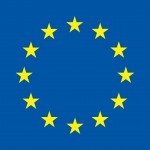Objectives:
To develop the methodological and theoretical underpinnings of the external exposome, based on data fusion of the disparate data and modelling sources.
Description of work and role of partners:
This WP will focus on i) investigating the state-of-the-art of new and emerging technologies and techniques, ii) will build an appraisal on how these can contribute to filling existing data gaps, along with modelling approaches and iii) will propose a strategy for the inclusion of these novel methods to contribute to unravelling the individual exposome in the pilot EU-wide Exposure and Health survey foreseen in Stream 5, particularly WP17. The key will be to model the myriad patterns of population movement by integrating GPS-enabled smartphone tracking apps and micro-sensor-based measurement of individual exposures with (agent-based) modelling of activity-based exposure data based on concentrations in microenvironments and time-activity data, incorporating behaviour, lifestyle and diet. This data fusion will also need to accommodate population level data from fixed environmental pollution monitoring networks, specific measurements in homes and also satellite remotely sensed data. The approach will need to take into account ‘critical’ lifetime exposure opportunities, and the varying spatial and temporal accuracy and availability of the input data sources.
Task 9.1 Evaluating the utility of sensor technologies in characterising the exposome (IOM, UC, AUTH, UNIVBRIS, VTT, TNO, OIKON, UOWM)
We will select suitable candidate sensor technologies based on the reviews undertaken in WP1 and preliminary trials of instrument reliability and utility. Ideally the sensors would include GPS, personal movement/activity sensor (e.g. dedicated sensors such as the ones of the Fitbit collection or apps utilizing the intrinsic capabilities of mobile phones – e.g. the Sleepcycle app), environmental temperature, relative humidity and visible light, but we will also explore the possibilities for monitoring air pollutants (e.g. particulate matter, ozone, oxides of nitrogen), environmental noise and ultraviolet light using and adapting commercial sensors such as the ones of Sensaris/Progis (covering temperature, humidity, noise, gaseous and particulate pollution) and academic technological developments such as the sensors developed in the BEACON network (UC Berkeley) (covering temperature, humidity, noise, UV light, gaseous pollutants and aerosol) and the University of Cambridge (UK) (covering temperature, humidity, CO, NOx and O3). The design of the sensor network for optimal data and exposure information recovery will be based on the location-allocation method developed by Prof. M. Jerrett at UC Berkeley. In addition we will develop, as appropriate, systems to collect and manage data about activities and stressful events (e.g. child crying), e.g. using smart-phones as data collection tool. The sensors will be evaluated in three centres using panels of pregnant mothers or mothers with young children. A total of 1400 mothers will be given the necessary sensors for providing the external exposome profile of the respective children.
Task 9.2 Development of methods to characterise external exposure to relevant agents where sensors are currently unsuitable (IOM, TNO, USTUTT, NCSRD, CSIC)
We will devise a series of questionnaires to collect data on relevant external exposures, based on the results of the reviews undertaken in WP1. We will devise methods for estimating the exposure of subjects for each exposure based on published data acquired in WP8 or from other sources, codified in an activity-exposure matrix. We will devise methods for updating the exposure estimates based on local fixed environmental sensors or remote sensing data, e.g. ESA data for air pollution, and/or measurements made in the home or local environments inhabited by the subjects, e.g. pesticide or phthalate concentrations in settled house dust. Occupationally related exposures at critical time points in an individual’s lifetime will be characterised here (e.g. maternal occupational exposure during pregnancy; take-home exposure from parents via residual contamination of work clothing, etc.). Furthermore we will include methods for estimating contaminants in diet using data on dietary habits and data from national food contamination databases (collected in WP8). Furthermore, we will develop and/or improve methods to estimate concentrations of contaminants in microenvironments from measured or modelled concentrations at other sites.
Task 9.3 Developing methods to integrate sensor and other approaches to prospectively estimate the exposome (IOM, UC, AUTH, USTUTT, UNIVBRIS, TNO, VTT, CSIC, UOWM, IDMEC-FEUP, CNR, NCSRD)
We will explore approaches to integrate sensor data with other available data for prospective characterisation of the exposome. We will use a time activity approach, along with novel strategies based on agent-based modelling. This work will draw upon data obtained from WP8 and methodologies developed in WP11.


